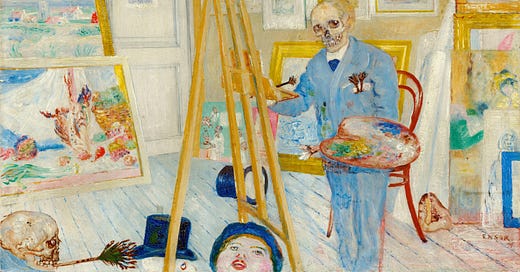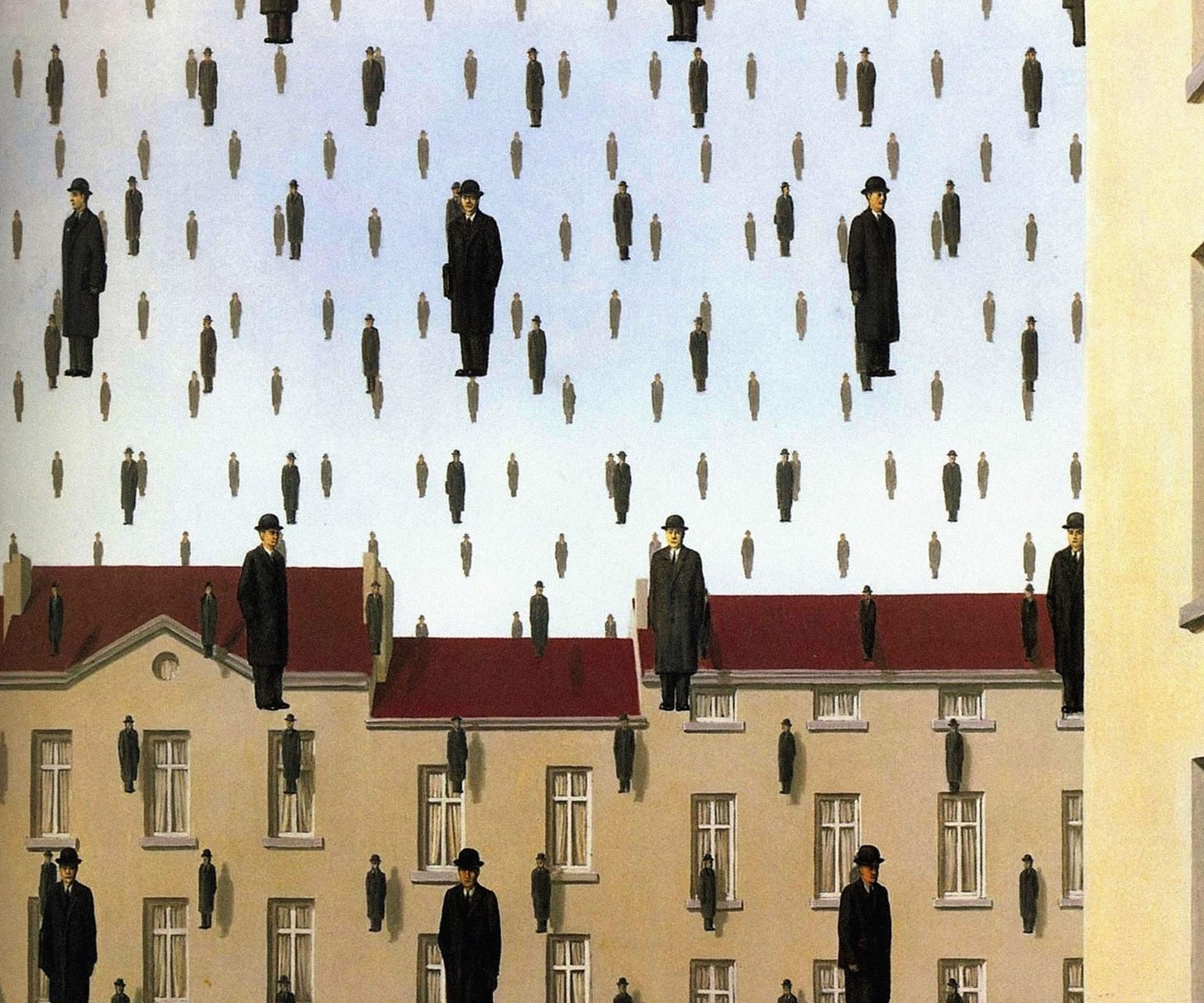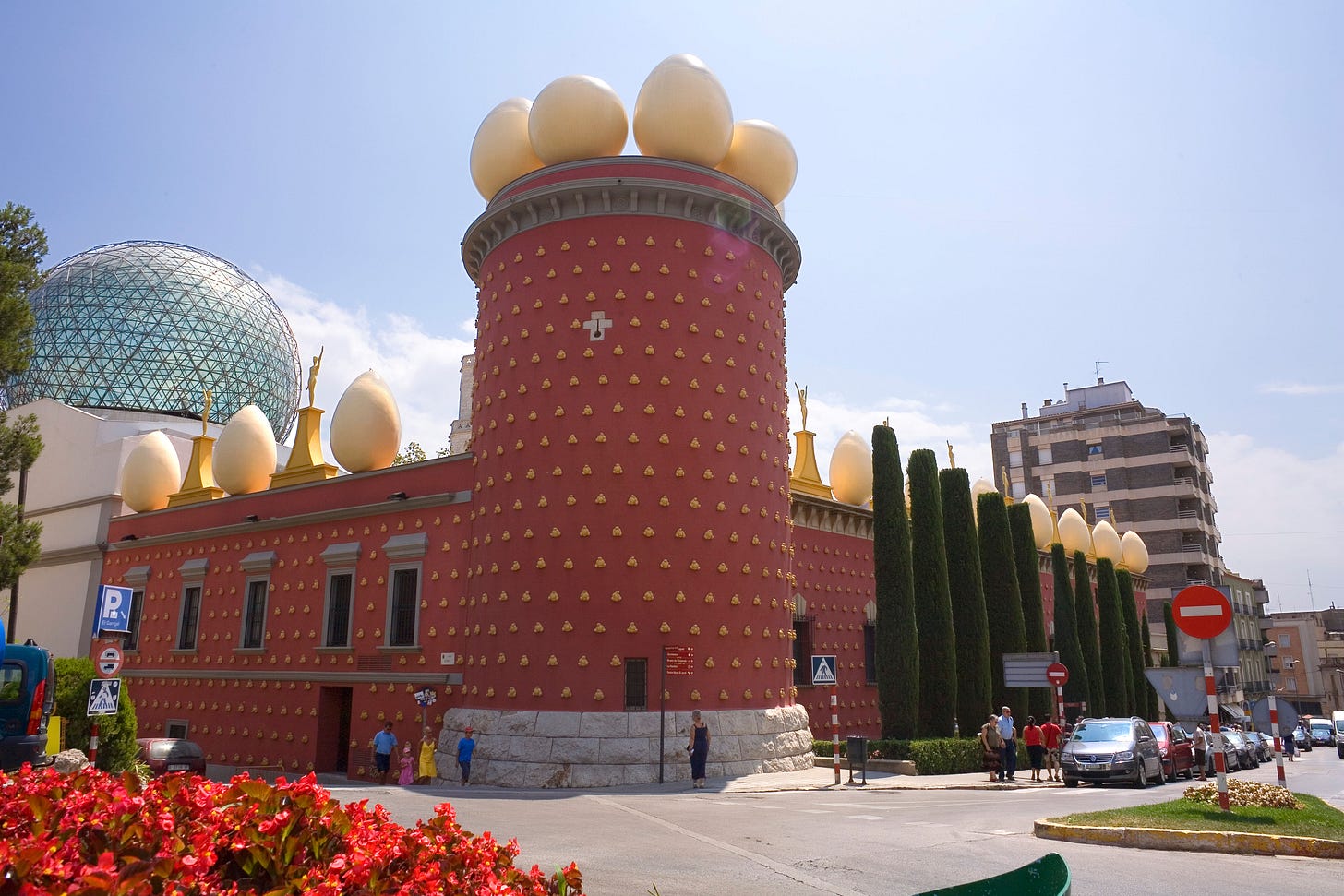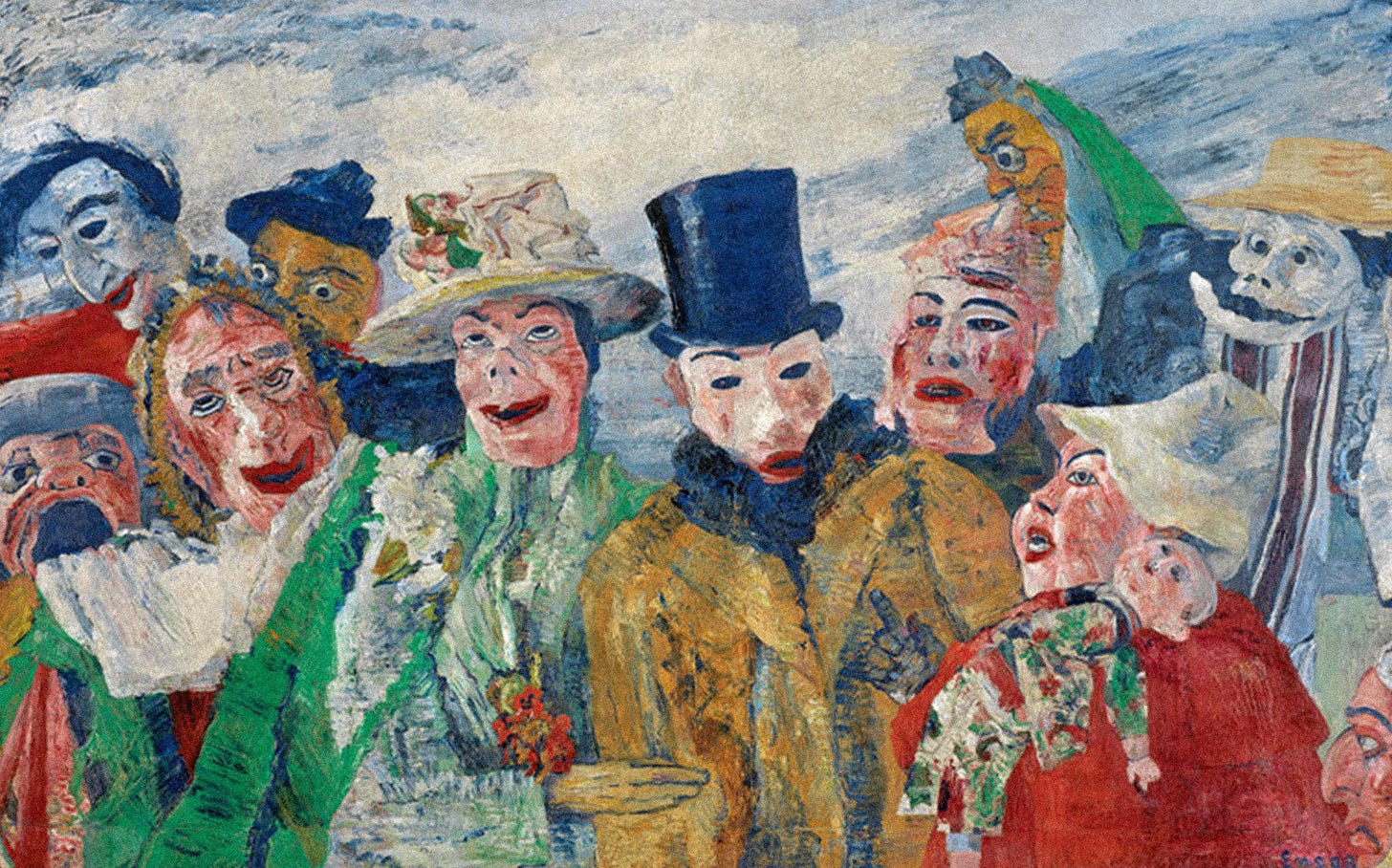All eyes on Belgian art in 2024
Next year, Belgium will pay homage to two of its most beloved painters: René Magritte and James Ensor.
Estimated reading time: about 4 minutes.
Next year, Brussels will celebrate two anniversaries:
100 years of surrealism
75 years since the death of James Ensor, one of Belgium’s most prominent painters
Let’s quickly chat about both, shall we?
Surrealism, supercharged
Plenty of currents have marked art history, but only a few of them went beyond mere painting techniques to become more. Surrealism was one of those: it was a way of life.
In 1924, French writer Andre Breton published a manifesto outlining surrealism: the belief that on top of our material reality there exists a spiritual reality, to which we can connect through our subconscious. He spends at least half of the manifesto explaining why our nighttime dreams should be given more importance.
Things that appear random to us, in our conscious state, are really hand-picked in the spiritual realm — and then communicated to us through symbols (such as dreams, or visions) that our subconscious produces.
Anyway, surrealism spread quickly, and what made it even more fascinating was that artists’ interpretation varied widely.
Rene Magritte, for instance, said he painted “what needs to be painted.” He’s quoted in several interviews as saying he often dreams up an image and then paints it, discouraging viewers from attempting to find deeper meaning in his works.
Dali, on the other hand, was all about that hidden meaning. He called his style the “paranoiac-critical method” — he relied on instinct more than rational thought and put elements together that otherwise had no logical relationship whatsoever. (Breton actually did not like Dali and felt his take on surrealism was too extreme, but that’s none of our business.)
In Brussels, two exhibits will mark this anniversary — one at the Royal Museum and another at the Bozar Center for Fine Arts — both opening February 21st. A reduced price 2-in-1 ticket is on sale until the end of the year (for 25 euro, rather than 36).
James Ensor
You probably know him, he’s the guy with the masks.
Ensor was not a surrealist but a symbolist — for several reasons.
One being that he was active in a different, earlier period, namely towards the end of the 19th century (and artistic currents are generally linked to both a style and a specific time period).
And while his work shows hints of otherworldliness, it is still very much based on reality. He used masks to symbolize hidden natures and social angst, but always depicted scenes strongly based on his vision of society.
Symbolists wanted to capture the mystical, and imaginary. They did not paint the everyday, but reflections of the inner self. Art history books call Ensor’s work fantastical and allegorical. They also call it lyrical, but that doesn’t mean anything.
Next year will mark 75 years since his death, an anniversary that might’ve gone unnoticed had it not coincided with Belgium’s presidency of the Council of the EU and the associated responsibility to celebrate national heritage.
There’s quite a few Ensor exhibits coming up:
One at the Bozar, focusing on his work overall, including his earlier realist period and some of his sketches and musical writings (Opens February 29th)
One at the Royal Library’s museum (KBR) focusing on his time in Brussels (Opens February 22nd)
A third in his native Ostende, where the muZEE has put together a collection of his still life paintings, which have their own flair (Opened in December, closes April 14th)
Ensor’s most famous painting, ‘Christ’s entry into Brussels,’ will not be on display among these.
It lives in California.
*Save the date!* I’m excited to finally share that on February 15th, I will be co-hosting an event dedicated to culture in various forms. Speakers will dive into issues like the connection between culture and politics, heritage preservation, work cultures and the need for innovation, and more. Sign up for free here!
Happening soon
Some of you asked me to share some Brussels events for those sticking around.
You could see the Belgian National Orchestra’s yearly Christmas show on December 22nd and 23rd. It’s The Nutcracker, of course.
If ballet is not your thing but you’d still enjoy some music, perhaps this Händel concert at Flagey, also on December 23rd, would be more up your alley.
Then on December 28th, celebrate the 60th anniversary of Korean-EU relations with some more music!
And speaking of Ensor, he is heavily featured in the Royal Museum’s permanent Fin de Siecle exhibit — permanent, that is, until January 8th, when renovation work will see it close for an inordinate amount of time (“probably at least until 2034,” a museum official says). For me, it was a wonderful lesson in Belgian art history and will be sorely missed.
Thank you for subscribing, thank you for reading, and thank you for sharing feedback that will help this newsletter grow and improve.
Happy holidays, happy new year, and speak soon!
Ana







